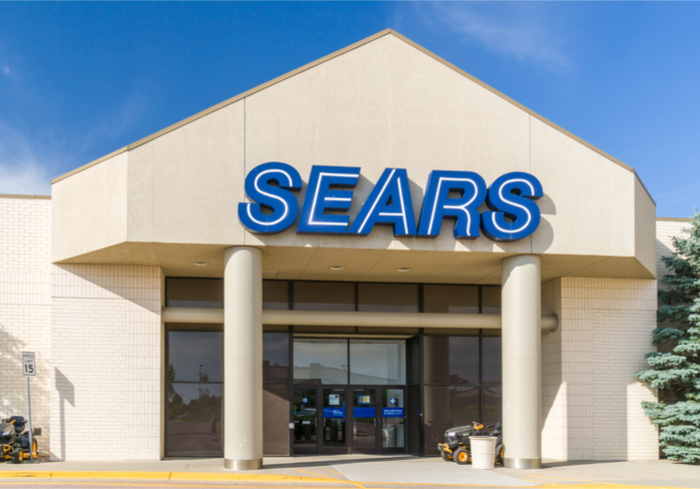
Retailers are cutting back on their brick-and-mortar footprints as consumers opt to shop online and away from malls, and Sears has been hit particularly hard. Earlier this year, Sears made the decision to close 72 stores, and this week, the department store announced that it plans to close the doors to 46 additional stores under the Sears and Kmart banners.
As Sears winds down operations at those stores, the retailer is planning to have liquidation sales at 33 Sears-branded stores and 13 stores under the Kmart banner starting next week. Ahead of the closures, Sears also said that eligible workers will be able to collect severance and apply to other stores for positions. And Sears plans “to evaluate our network of stores, which is a critical component to our integrated retail transformation and will make further adjustments as needed.”
The retailer has had a rough year, with its shares plummeting by nearly 85 percent over that period, and the company’s shares hit a record intraday low of $1.09 on Thursday morning (August 23). The retailer’s struggles have gone on for several years, as the firm has seen its sales tank and foot traffic evaporate. As of May, the retailer has reported sales declines dating back to the third quarter of 2011.
In January, the retailer announced that it raised another $100 million in financing and would be slashing $200 million in annualized costs through measures other than store closures. In addition, news surfaced this week that a hedge fund controlled by the chief executive of Sears Holdings, Eddie Lampert, was seeking to purchase Sears’ Kenmore brand for $400 million,although the value could change at the time of a potential closing.
The fund, ESL Investments, has been interested in Kenmore for some time. Writing as the chairman and CEO of ESL in April, Lampert said in a letter to the retailer’s board that “pursuing these divestitures now will demonstrate the value of Sears’ portfolio of assets, will provide an important source of liquidity to Sears and could avoid any deterioration in the value of such assets.”
Will a potential deal with ESL close, and will Sears announce more closures in the future? Time will tell, but Sears may face a rocky road ahead. Despite efforts to test out new retail concepts such as combined Sears and Kmart stores, CNBC reports that “retail analysts say it will be hard for the company to bounce back from its dire situation.”
In Other Brick-And-Mortar News
Target is expanding its curbside pickup service to California and Colorado. With the service, customers order products through Target’s app and drive to a brick-and-mortar store. When they arrive, employees deliver the goods to their cars. Orders are said to usually be ready within an hour after customers place them.
Earlier this year, Target had announced its plans to introduce the service to nearly 1,000 of its brick-and-mortar stores, which the company says is on track to happen by the holiday season. Currently, the service is available at locations in dozens of states.
TJX has pulled off its 16th consecutive quarter of growing customer traffic to its stores — this time powered by deep discounts that brought younger shoppers to its doorstep. Unlike many of its peers in physical retail, TJX has weathered the last several uncertain years rather steadily, with consistently growing foot traffic from its loyal and enthused fanbase.
TJX — which offers something of a treasure hunt experience for shoppers looking for designer quality goods at big box prices — has turned out to be a model that has been hard for digital players such as Amazon to imitate or supplant via eCommerce channels. Younger customers are particularly responsive to the TJX model of non-advertised deep discounts, and in Q2 they drove a 34 percent jump in profit and a 6 percent bump in shares just after the results were announced.
Anthem, the health benefits company, announced this week that it had inked a deal with Walmart to advance the companies’ joint goals of reducing healthcare costs and providing consumers with more access to over-the-counter (OTC) drugs. In a press release, the companies announced that an Anthem-Walmart program will launch in January of 2019.
The program is said to give consumers enrolled in Anthem’s affiliated Medicare Advantage (MA) plans the ability to use “plan allowances to purchase OTC medications and health-related items, such as first aid supplies, support braces and pain relievers at Walmart’s 4,700 stores and on Walmart.com.” The companies said the new partnership is expected to improve MA customer access to these items and reduce out-of-pocket costs.